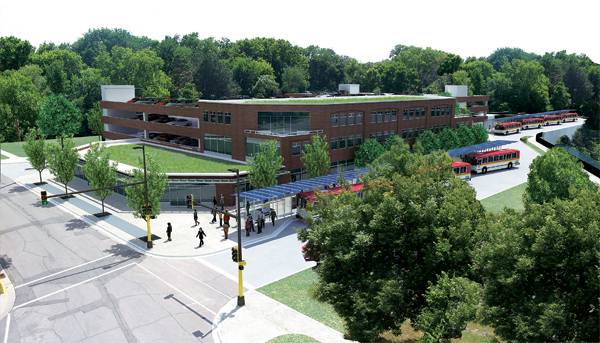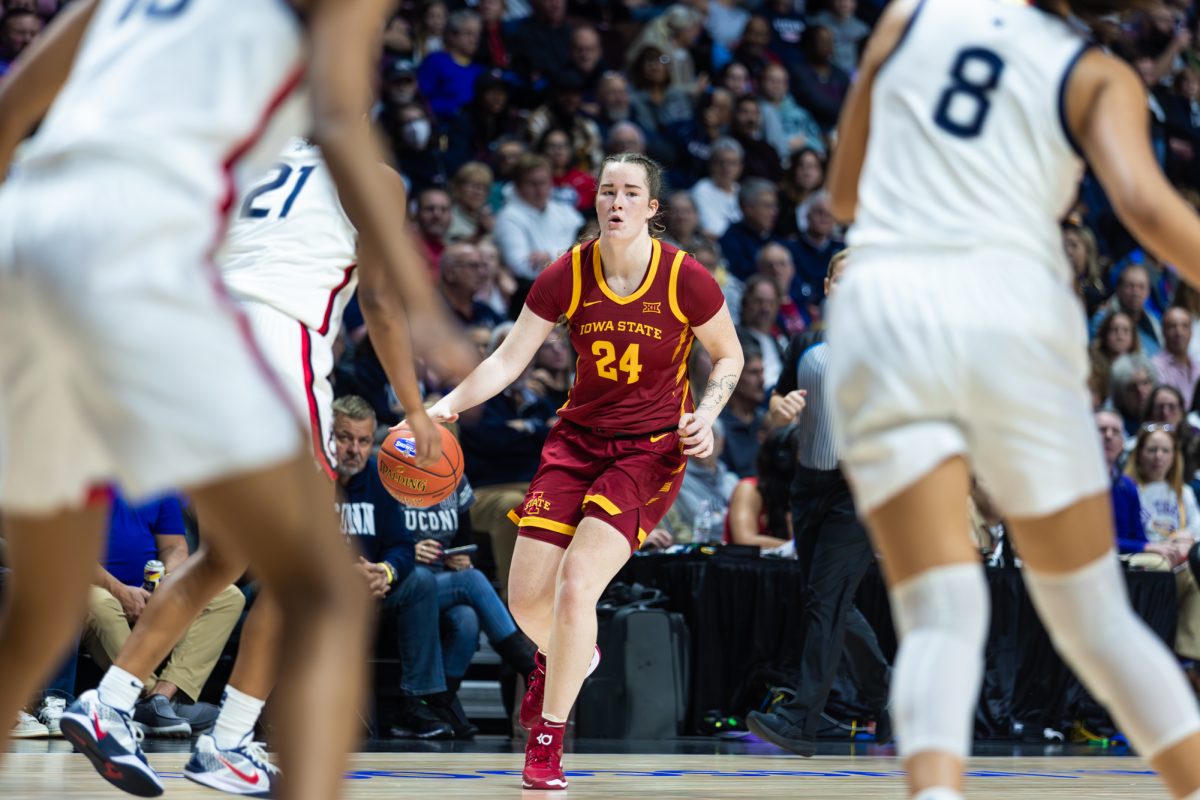New hub could boost city economy

The new transportation hub would bring both a short-term and long-term financial boost to Ames. The facility would create jobs in the short run and revitalize Campustown in the long run. Graphic rendering: URS Corporation
August 30, 2009
The intermodal transportation hub proposed for Hayward Avenue would be the first step in revitalizing the area.
According to city leaders, the project, even on its own, would have positive short-term and long-term economic impacts on Campustown.
In fact, that’s one of the things CyRide, Iowa State and the city of Ames will have to prove in order to receive a $39.7 million federal grant to build the structure.
The grant would be part of the Transportation Investment Generating Economic Recovery, or TIGER program, a part of the American Recovery and Reinvestment Act that passed in February.
“One of the things that we need to be able to demonstrate through the work that we’re doing … is a purpose and need,” said Bill Troe, transportation planner with URS Corporation in Urbandale, a consultant on the project.
Short-term
The short-term stimulus, according to a presentation given by Troe on Friday, would come primarily from an estimated 400 construction-related jobs required to build the project.
In addition, Troe said a project of this magnitude has a “multiplier” effect, because companies that make up the individual components of the facility will be given a boost.
“That is folks like suppliers of door handles and things like that,” said Sheri Kyras, director of transit for CyRide.
In addition, construction workers will live in Ames housing, eat at local restaurants and consume other area services — another multiplier.
“Over that construction period, we’re creating another 105 [jobs] that are basically a spin-off from [the initial 400].” Troe said.
Long-term
In the long run, the transit hub is just one piece in revitalizing Campustown.
The desire for more parking in the area stems partially from a study completed by Iowa State and Ames in 2008, said Cathy Brown, assistant director of campus physical planning with the facilities, planning and management department.
The study looked at ideas for the block bound by Welch Avenue, Hayward Avenue, Lincoln Way and Chamberlain Street.
A variety of options were evaluated, including diverting a portion of College Creek to run diagonally across the block, converting the central parking lot and the corner of Welch Avenue and Lincoln Way into green space.
In addition, the creation of more office and retail space was considered — as much as 70,000 square feet — which would add an estimated 300 jobs to the Campustown area if fully occupied.
Brown said the document was “sort of like a feasibility study,” and that there are no plans to undertake the project currently.
But the first take-away from the study, recognition that parking would need to be the first step in any revitalization efforts, is now on the table.
“The thought is, there isn’t parking now for 70,000 square feet of office in the Campustown area,” Kyras said.
Future
The Transportation Investment Generating Economic Recovery, or TIGER, grant application is due Sept. 15, and approval or rejection of the grant should decided by February.
If approved, the project needs to be built and open for business by February of 2012.





